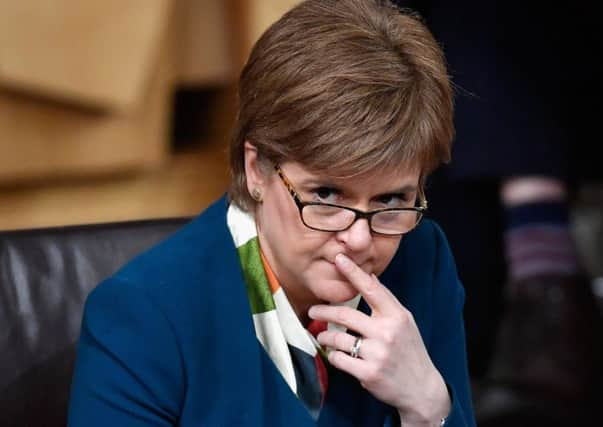Action is needed to close the gap between rich and poor


It might seem strange that a substantial 70-page document compiled by the diligent and industrious civil servants of the “Scottish Government Communities Analysis Division” should be overlooked by their colleagues in the communications department.
Perish the thought, but had the lack of official fanfare from the government anything to do with the contents of the report?
Advertisement
Hide AdAdvertisement
Hide AdA quick glance at its findings did little to discourage the scurrilous notion that the government might have been unwilling to trumpet unhelpful facts and figures when it quietly slipped the document on to its website.
According to the government’s own report, the gap between rich and poor in Scotland is widening with the wealthy getting wealthier while the poor get poorer.
The wealthiest 10 per cent of households owned 43 per cent of all private net wealth – the equivalent of £374 billion.
In contrast, the least wealthy 50 per cent of households owned just nine per cant of all private wealth – the equivalent of £76.9bn. As reported in this newspaper yesterday, the wealthiest 1 per cent alone owned more wealth than the bottom 50 per cent.
Broken down further, the wealthiest 10 per cent owned 67 per cent of financial wealth, 54 per cent of private pension wealth, 43 per cent of property wealth and 34 per cent of physical wealth – defined as the value of household goods such as computers, televisions, jewellery, collectables and vehicles. This comfortable state of affairs for “the haves” compares with a far bleaker picture for the “have-nots”.
The least wealthy half of households owned less than 2 per cent of financial wealth, 2 per cent of private pension wealth, 5 per cent of property wealth; and 18 per cent of physical wealth.
Furthermore the chasm between rich and poor has increased in recent years. In 2012/14 the wealthiest 10 per cent owned 9.4 times more household wealth than the bottom 40 per cent – an increase from 8.8 in 2010/12.
A major report detailing increasing inequality in a nation is an unhappy occurrence no matter the way in which it is made public. In the case of Wealth and Assets in Scotland 2006-2014, it is particularly unhappy when it is considered that the scourge of inequality is at the heart of two of the biggest challenges facing the Scottish Government.
Advertisement
Hide AdAdvertisement
Hide AdThe iniquitous society in which we live is intrinsically linked to the problems in Scottish health and education.
Last month a Royal College of Paediatrics and Child Health report said Scotland had one of the worst children’s health records in Western Europe with more than 210,000 children living in poverty. It also found 27 per cent were overweight or obese and that 400 children die each year with a “significant number” potentially avoidable.
In the classroom, the attainment gap that sees rich children outperform their poor counterparts has become a political hot potato. The anger over the uneven playing field that denies the poor the opportunities that are grasped by the more privileged has led to Nicola Sturgeon proclaiming that closing the attainment gap is her number one priority.
Recent studies suggest the First Minister has a battle on her hands. An international Pisa study showed Scotland was slipping down the global league tables when it came to maths, reading and science.
Further analysis of the same data suggested bright children from poor backgrounds in Scotland lag behind their wealthy classmates by more than two and a half years by the time they reach 15.
Faced with a barrage of criticism over the SNP’s handling of the education brief, Ms Sturgeon has defended herself by pointing out that the Pisa figures date from 2015 and her education reforms have only just been launched.
That, however, still begs the questions of how and why the various SNP administrations do not do more to tackle inequality and the adverse effects it has on health and education.
The truth is that Alex Salmond’s first minority government from 2007-11 built its formidable reputation on proving that it could govern Scotland effectively as it built its case for independence.
Advertisement
Hide AdAdvertisement
Hide AdA large part of showing it was a safe pair of hands was based on a series of populist policies such as free prescriptions, free university tuition, abolition of bridge tolls and the council tax freeze.
The SNP’s sensational result in the 2011 Scottish election proved these initiatives were popular at the ballot box (although the SNP were helped by a Scottish Labour Party in self-destruct mode). As the Wealth and Assets report shows, the policies were less effective when it came to reducing inequality.
The SNP majority government from 2011-16 was dominated by the 2014 referendum, leaving little time for the sort of radical reforms required to tackle the growing inequality gap.
If this week’s report does nothing else it should at the very least remind ministers that more needs to be done.
Otherwise an unhealthy proportion of Scots will continue to be dealt a bad hand in the lottery of life.